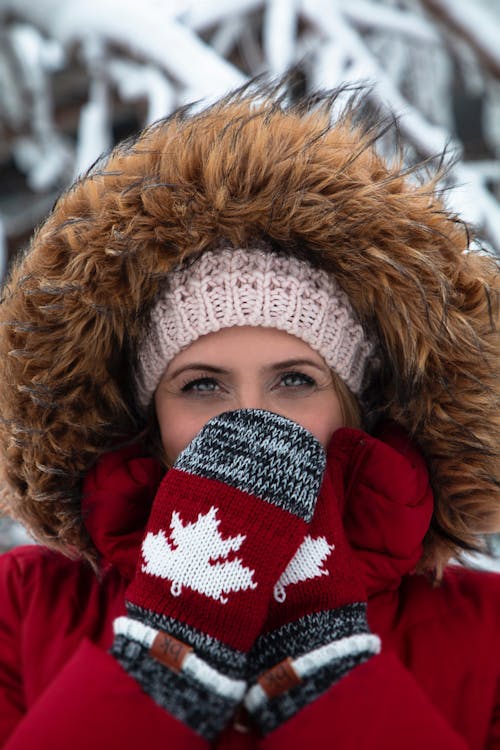Skiing down a snow-covered mountain, surrounded by breathtaking winter landscapes, is a thrilling experience. However, the cold temperatures and harsh conditions demand proper preparation to ensure both comfort and safety. One essential item that should never be overlooked is thermal clothing.
In this ultimate guide, we will delve into the importance of packing thermals for your ski adventures, the benefits they offer, and how they keep you warm and comfortable in freezing conditions.
The Role of Thermals in Skiing
Thermal clothing, often referred to as base layers, serves as the foundation of your ski attire. Unlike ordinary clothing, thermals are designed to provide superior insulation and moisture management, making them indispensable for anyone venturing into cold environments. The primary role of thermals is to retain body heat while wicking away moisture, ensuring that you stay warm and dry throughout your skiing adventure.
Benefits of Thermal Clothing

Superior Insulation
The most crucial benefit of thermal clothing is its ability to provide superior insulation. Thermals are made from materials like merino wool, polyester, or a blend of synthetic fibers and trap body heat close to your skin. This retained heat creates a warm microclimate around your body, preventing the cold from seeping in. Whether you're skiing down steep slopes or waiting for the ski lift, thermals ensure that you remain comfortably warm.
Moisture Management
Skiing is a physically demanding activity that can cause you to sweat even in freezing conditions. Moisture management is vital to prevent the uncomfortable chill that comes from damp clothing. High-quality thermal clothing is designed to wick sweat away from your skin and transport it to the outer layers, where it can evaporate. This moisture-wicking property keeps you dry and helps regulate your body temperature.
Breathability
Thermals are engineered to be highly breathable, allowing excess heat and moisture to escape. This breathability is essential for maintaining a balanced body temperature and preventing overheating during intense physical activity. By allowing your skin to breathe, thermals ensure that you stay comfortable and avoid the discomfort of being too hot or too cold.
Flexibility and Comfort
Thermal clothing is designed to fit snugly against your skin, providing maximum flexibility and comfort. The lightweight and stretchy materials used in thermals allow for a full range of motion, which is crucial for skiing and other winter sports. The seamless design of many thermals also helps to prevent chafing and irritation, ensuring that you can move freely and comfortably.
Layering Potential
One of the key advantages of thermals is their versatility in layering. Thermals serve as the base layer, which can be easily combined with mid-layers and outer layers to create a comprehensive cold-weather outfit. This layering potential allows you to adapt to changing weather conditions by adding or removing layers as needed. For instance, on particularly cold days, you can wear multiple layers of thermals for added warmth without feeling bulky.
Choosing the Right Thermals

When it comes to selecting the right thermals for your ski adventure, there are several factors to consider:
1. Material
Thermals come in a variety of materials, each with its unique properties. Merino wool is highly regarded for its excellent insulation, moisture-wicking abilities, and natural odor resistance. Synthetic materials like polyester and nylon are also popular due to their durability and quick-drying properties. Consider your personal preferences and the specific conditions of your ski trip when choosing the material.
2. Fit
The fit of your thermals is crucial for optimal performance. Thermals should fit snugly against your skin to effectively trap heat and wick away moisture. However, they should not be so tight that they restrict movement or cause discomfort. Look for thermals with a stretchy, ergonomic design that allows for a full range of motion.
3. Weight
Thermals are available in different weights, typically categorized as lightweight, mid-weight, and heavyweight. Lightweight thermals are ideal for milder conditions or for those who prefer a less bulky feel. Mid-weight thermals offer a balance of warmth and breathability, making them suitable for a wide range of conditions. Heavyweight thermals provide maximum insulation for extremely cold environments. Consider the weather conditions and your activity level when selecting the weight of your thermals.
4. Seams and Construction
The construction of your thermals can impact their comfort and durability. Look for thermals with flatlock seams, which lie flat against your skin and prevent chafing. Additionally, seamless designs minimize the risk of irritation and provide a smoother fit. Reinforced areas, such as the knees and elbows, can also enhance the durability of your thermals.
Caring for Your Thermals
Proper care is essential to ensure that your thermals continue to perform at their best. Here are some tips for maintaining your thermal clothing:
1. Follow Care Instructions
Always follow the care instructions provided by the manufacturer. Different materials may require specific washing and drying methods to maintain their performance and longevity.
2. Wash with Mild Detergent
Use a mild detergent that is free of harsh chemicals and fragrances. Harsh detergents can damage the fibers of your thermals and reduce their effectiveness.
3. Avoid Fabric Softeners
Fabric softeners can leave a residue on your thermals that reduces their moisture-wicking capabilities. Instead, opt for a detergent specifically designed for performance fabrics.
4. Air Dry
Whenever possible, air dry your thermals to prevent damage from high heat. If you must use a dryer, use a low heat setting to avoid shrinking or damaging the fabric.
Incorporating Thermals into Your Ski Gear
Thermals are a critical component of your overall ski gear. To maximize their benefits, it's important to incorporate them effectively into your layering system. Here's how to build a comprehensive ski outfit using thermals:
Base Layer
Your thermals serve as the base layer, which should fit snugly against your skin. This layer is responsible for moisture management and insulation. Look for thermals with excellent wicking properties and a comfortable fit.
Mid Layer
The mid-layer provides additional insulation and can be adjusted based on the temperature and your activity level. Fleece jackets, down vests, or synthetic insulated jackets are popular choices for mid-layers. This layer should fit comfortably over your thermals without restricting movement.
Outer Layer
The outer layer, or shell, protects you from wind, snow, and moisture. Look for a waterproof and breathable ski jacket and pants that can withstand the elements. The outer layer should fit comfortably over your mid and base layers, allowing for freedom of movement.
Additional Tips for Staying Warm on the Slopes

Equip Yourself with Essential Accessories
Accessories play a vital role in keeping your extremities warm, which are the first to feel the cold. Here’s what you need:
- Gloves or Mittens: Insulated, waterproof gloves or mittens are essential to keep your hands warm and dry. Mittens generally provide more warmth, but gloves offer better dexterity.
- Hats and Helmets: A warm hat or a helmet liner can prevent significant heat loss from your head. Helmets designed for skiing often come with insulated linings for added warmth.
- Neck Gaiters and Balaclavas: These accessories protect your neck and face from biting winds and cold air. They are versatile and can be adjusted to cover different parts of your face as needed.
- Thermal Socks: High-quality thermal socks made from wool or synthetic blends keep your feet warm and dry. Avoid cotton socks, as they retain moisture and can lead to cold feet.
Stay Hydrated
Maintaining hydration is crucial for your overall well-being and temperature regulation. Here’s how to stay hydrated:
- Drink Regularly: Drink water consistently throughout the day, even if you don’t feel thirsty. Cold weather can suppress your thirst, but your body still needs fluids to function correctly.
- Warm Beverages: Carry a thermos with a warm beverage, such as herbal tea or hot water with lemon. These drinks can provide warmth and hydration simultaneously.
- Avoid Excessive Caffeine and Alcohol: Both can lead to dehydration. While a warm coffee or après-ski drink may be tempting, balance them with plenty of water.
Dehydration can increase your susceptibility to the cold, so make hydration a priority.
Take Regular Breaks to Warm Up
Taking breaks is essential to prevent your body from getting too cold and to maintain energy levels:
- Indoor Warm-Up: Take regular breaks in heated lodges or shelters to warm up. Remove your outer layers and allow your body to acclimate to the indoor temperature gradually.
- Hot Meals and Snacks: Consume warm, high-energy foods and drinks to keep your energy levels up. Soups, stews, hot chocolate, and warm sandwiches are excellent options.
- Stretch and Move: Use break times to stretch your muscles and keep your blood flowing. Simple movements like squats or jumping jacks can help maintain circulation and warmth.
Regular breaks allow your body to recover from the cold and replenish your energy, making your ski experience more enjoyable and safe.
Packing thermals for your ski adventures is essential for staying warm, dry, and comfortable in freezing conditions. The superior insulation, moisture management, breathability, and flexibility of thermal clothing make it an indispensable part of your skiing gear. By choosing the right thermals and incorporating them effectively into your layering system, you can enjoy the slopes with confidence and comfort.
At Light Hiking Gear, we offer a range of lightweight backpacking gear, including ultralight hiking packs and comfortable hiking backpacks that are perfect for your winter adventures. Whether you're shopping for camping socks online, looking for a dynamic daypack, or in need of a survival stove or camping chair, we have everything you need to enhance your outdoor experience.
Shop our collection today and gear up for your next ski adventure with the best in lightweight backpacking gear!




0 comments